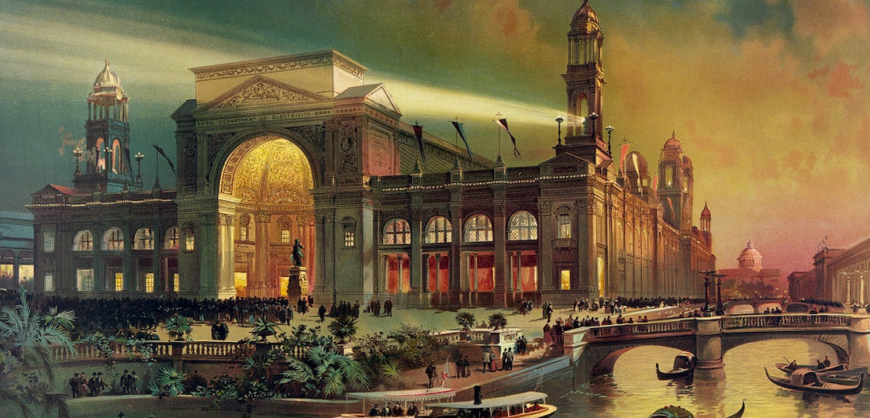If we time travelled back to America’s Gilded Age, the closing decades of the nineteenth century, what would the future look like? The economy was booming as cities expanded and industrialization gathered pace. Railways spread across the country, fuelling westward expansion with the opening of the First Transcontinental Railway in 1869. European investors flooded this growing market as they jostled to cash in on American prosperity, and American speculators made their own fortunes, too. Day by day, the United States seemed to be accelerating into the future promised by industry. Nikola Tesla, reminiscing in later years about his 1884 arrival in New York, remembered thinking that America was “more than one hundred years AHEAD of Europe and nothing has happened to this day to change my opinion.”1
This new tomorrow was to arise through the power of innovation. In 1876, Americans celebrated a century of independence with the Centennial Exhibition in Philadelphia. The huge Corliss steam engine that dominated the main exhibition building was forty-five feet tall and, through a series of shafts more than a mile in length, powered almost every other machine present. At this same event, Alexander Graham Bell’s telephone was exhibited for the first time. And American ingenuity showed no signs of abating. Almost twenty years later, viewing Chicago’s Columbian Exposition in 1893, commentators believed they were seeing the stuff of which the future would be made — it was “a shining vision, serenely awaiting the admiration of the world”.2 What did the privileged elite of the Gilded Age, those who often funded and stood to profit most from this vision, make of all this? How would they think about their own place in the future that technological ambition and innovation seemed to offer?
What neuroscientists have learned about rejuvenating the aging brain & what you can do too
Luckily, one of them told us exactly how he imagined the century to come. In 1894, New York publishers D. Appleton and Company released A Journey in Other Worlds: A Romance of the Future, written by John Jacob Astor IV, one of America’s wealthiest men. The Astor clan had originally made their fortune in the fur trade, and had added to their millions through investment in land and property. In 1897, John Jacob would build the Astoria Hotel in New York, next door to the Waldorf, owned by his cousin William. The hotel was both a symbol of the Astor family’s wealth and a honeypot for New York’s fashionables (Tesla himself lived there until he was turfed out for failing to pay his bills). It’s Astor’s authorship that makes the book such a fascinating insight into the Gilded Age’s fantasies about its prosperous tomorrows.
Read more: Public Domain Review





































